One of the main functions of the pancreas is to produce and release a number of enzymes that help the body break down food and absorb nutrients But pancreatic cancer and its treatments can cause the pancreas to make fewer of these essential enzymes — a condition known as exocrine pancreatic insufficiency (EPI)Exocrine pancreatic insufficiency (EPI) is a syndrome caused by insufficient synthesis and secretion of digestive enzymes by the exocrine portion of the pancreas EPI is less common than pancreatitis in both dogs and cats, but it is the second most commonProf Dr César L A Gómez Dumm* HISTOLOGIA DEL PANCREAS EXOCRINO El páncreas está

Exocrine Pancreatic Insufficiency Mission Cure
Exocrine pancreatic enzyme deficiency icd 10
Exocrine pancreatic enzyme deficiency icd 10-The pancreas is located posterior to the stomach and next to the duodenum The pancreas functions as both an exocrine and endocrine gland The exocrine function of the pancreas is essential for digestion as it produces many of the enzymes that break down the protein, carbohydrates, and fats in digestible foodsExocrine pancreas abnormalities are increasingly recognized as features of type 1 diabetes We previously reported reduced serum trypsinogen levels and in a separate study, smaller pancreata at and before disease onset We hypothesized that three pancreas enzymes (amylase, lipase, and trypsinogen) might serve as serological biomarkers of pancreas volume and risk for
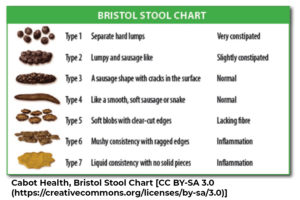



Pancreatic Enzymes Pancreatic Exocrine Insufficiency Guts Uk
The pancreas is a glandular organ in the upper abdomen, but really it serves as two glands in one a digestive exocrine gland and a hormoneproducing endocrine gland Functioning as an exocrine gland, the pancreas excretes enzymes to break down the proteins, lipids, carbohydrates, and nucleic acids in foodThe exocrine pancreas secretes digestive enzymes into the small intestine and provides a microenvironment for pancreatic islet cells that modulate blood glucose (among other functions) The exocrine pancreas is seldom a prominent target of acute or xenobioticinduced toxicity in spite of several key observationsEnzymes break up proteins, fats and carbohydrates from the food that you eat, into smaller pieces which your intestines can then absorb Your pancreas also produces insulin, which controls your body's glucose levels What is pancreatic exocrine insufficiency?
How do doctors diagnose Exocrine Pancreatic Insufficiency or EPI?What causes exocrine pancreatic insufficiency (EPI)?Pancreas pan´kreas (pl pancre´ata) (Gr) a large, elongated, racemose gland located transversely behind the stomach, between the spleen and duodenum (See also Plate 11) It is composed of both exocrine and endocrine tissue The acini secrete digestive enzymes, and small ductules leading from the acini secrete sodium bicarbonate solution The
Exocrine pancreas, the portion of the pancreas that makes and secretes digestive enzymes into the duodenum This includes acinar and duct cells with associated connective tissue, vessels, and nerves The exocrine components comprise more than 95% of the pancreatic massPancreatic acini Units of secretory acinar cells surrounding a small lumenTiempo estimado de lectura 3 mins




Understanding Pancreatic Exocrine Insufficiency And Replacement Therapy In Pancreatic Cancer European Journal Of Surgical Oncology




Reading Php Lab
The pancreas is part of your digestive system It makes enzymes that aid digestion and help your body absorb nutrients When you have EPI, you don't have enough digestive enzymes Foods pass through your intestines in a more complete (undigested) stateIn pancreatitis, enzymes of the exocrine pancreas damage the structure and tissue of the pancreas Detection of some of these enzymes, such as amylase and lipase in the blood, along with symptoms and findings on medical imaging such as ultrasound or a CT scan , are often used to indicate that a person has pancreatitisExocrine function of the pancreas The pancreas produces roughly 15–2 L of digestive secretions, which travel to the duodenum via the pancreatic duct These secretions consist of bicarbonate, which makes the fluid alkaline (pH 8), and several enzymes that are essential for digestion Trypsinogen and chymotrypsinogen are inactive protease precursors




Is Epi Reversible




Exocrine Pancreatic Insufficiency In Dogs Vca Animal Hospital
Doctors usually diagnose EPI using a fecal elastase test Elastase is an enzyme made by the pancreas that helps down essential nutrients like fats, proteins, and carbohydrates after you eatLoss of digestive enzymes leads to maldigestionExocrine pancreas 1 THE PANCREAS 2 Anatomy Pancreas – "all flesh" Transversely oriented retroperitoneal organ Extending from "C"loop of duodenum to the hilum of spleen Measures cm in length Weighs 90gms in men,85gms in women 3
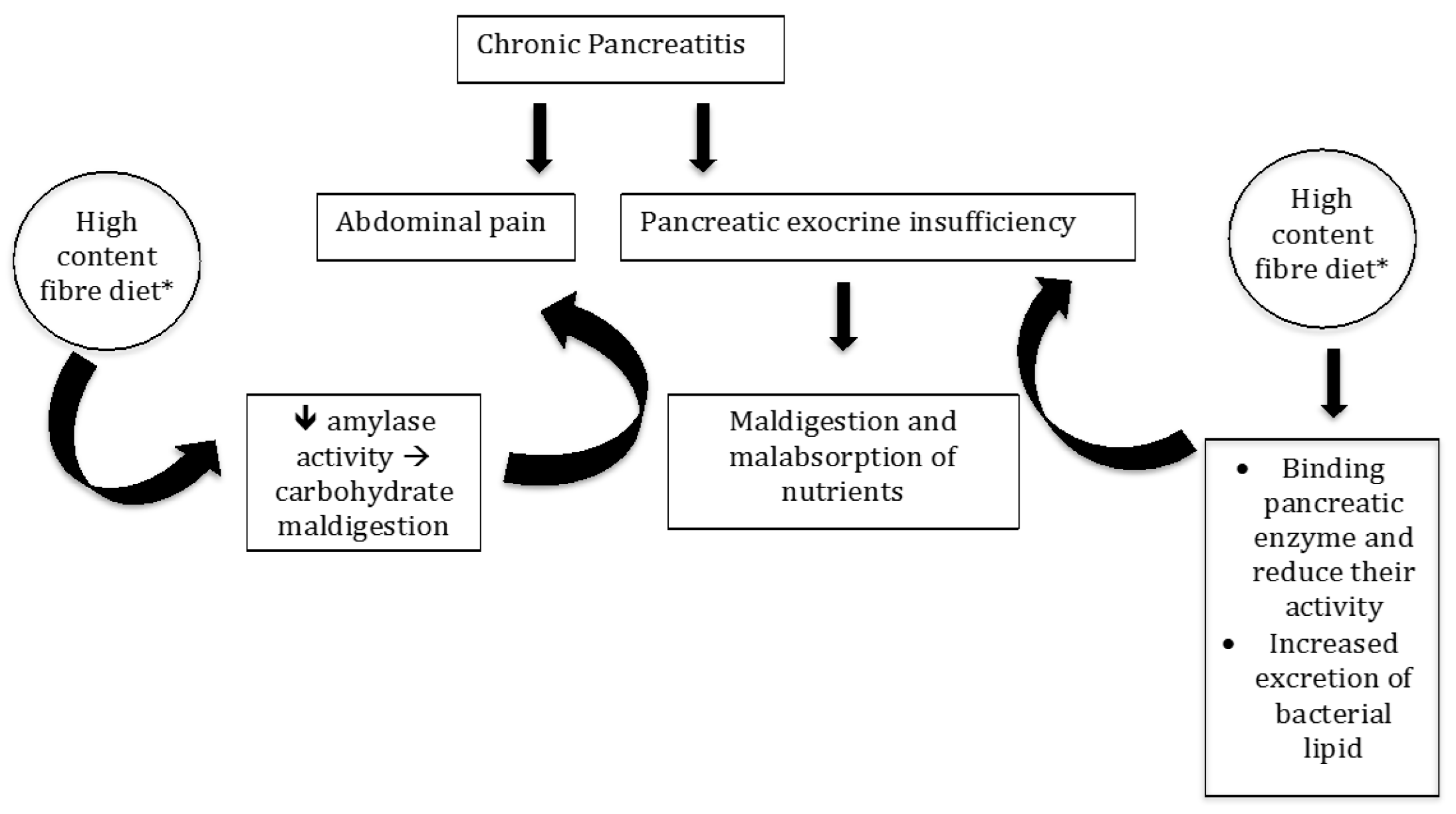



Nutrients Free Full Text Role Of Fibre In Nutritional Management Of Pancreatic Diseases Html




Pancreatic Enzymes Pancreatic Exocrine Insufficiency Guts Uk
EPI is associated with certain diseases and conditions that affect the pancreasExocrine pancreatic function was studied in 15 patients with hypothyroidism and 15 healthy subjects by means of the amino acid consumption test, a new tubeless test based on the measurement of plasma amino acid uptake by the pancreasExocrine pancreatic insufficiency (EPI) develops when your pancreas doesn't make or release enough of those enzymes This enzyme shortage leads to



2




The Exocrine Functions Of The Pancreas
For the exocrine pancreas, in particular, the machinery must adapt to increased protein loads requiring processing during and after a meal as the pancreas replenishes its stores of digestive enzymes This increased load would require synthesis of chaperones and foldases, as well as upregulation of the systems involved in degradation of unfolded and misfolded proteinsThe exocrine pancreas secretes digestive enzymes, fluid and bicarbonate in response to food ingestion (Singh et al, 18) Canine exocrine pancreatic insufficiency (EPI) is a digestive disorder resulting from the insufficient secretion of enzymes from the pancreasExocrine Secretions of the Pancreas Pancreatic juice is composed of two secretory products critical to proper digestion digestive enzymes and bicarbonate The enzymes are synthesized and secreted from the exocrine acinar cells, whereas bicarbonate is secreted from the epithelial cells lining small pancreatic ducts Digestive Enzymes
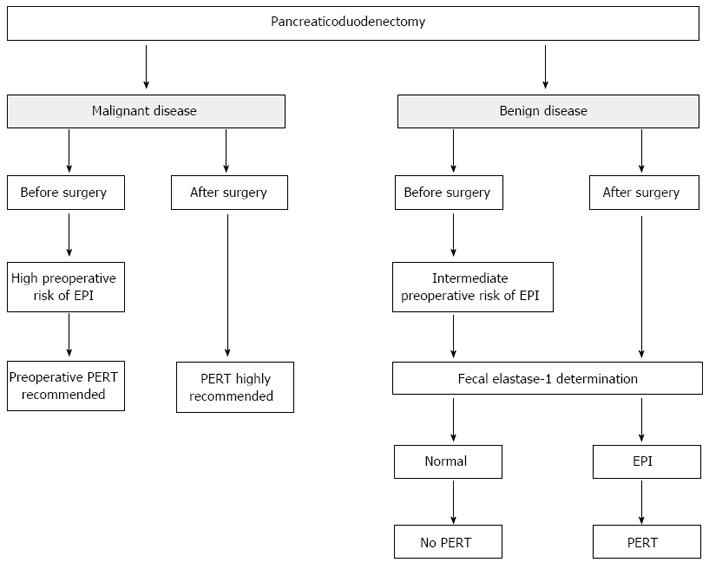



Exocrine Pancreatic Insufficiency In Adults A Shared Position Statement Of The Italian Association For The Study Of The Pancreas




Slide Show Exocrine Pancreatic Insufficiency Epi
The exocrine pancreas produces 3 main types of enzymes amylase, protease, and lipase Under normal physiologic conditions, pancreatic enzymes (specifically, lipase) break the undigested triglycerides into fatty acids and monoglyceridesEXOCRINE PANCREATIC INSUFFICIENCY (EPI) Exocrine pancreatic insufficiency (EPI) is a condition characterized by deficiency of the exocrine pancreatic enzymes, resulting in the inability to digest food properly, or maldigestion Who gets EPI?The majority of the pancreas is made up of the exocrine portion (85% by mass) and secretes digestive enzymes, water and bicarbonate to assist in digestion The bicarbonate helps in neutralising the stomach acid
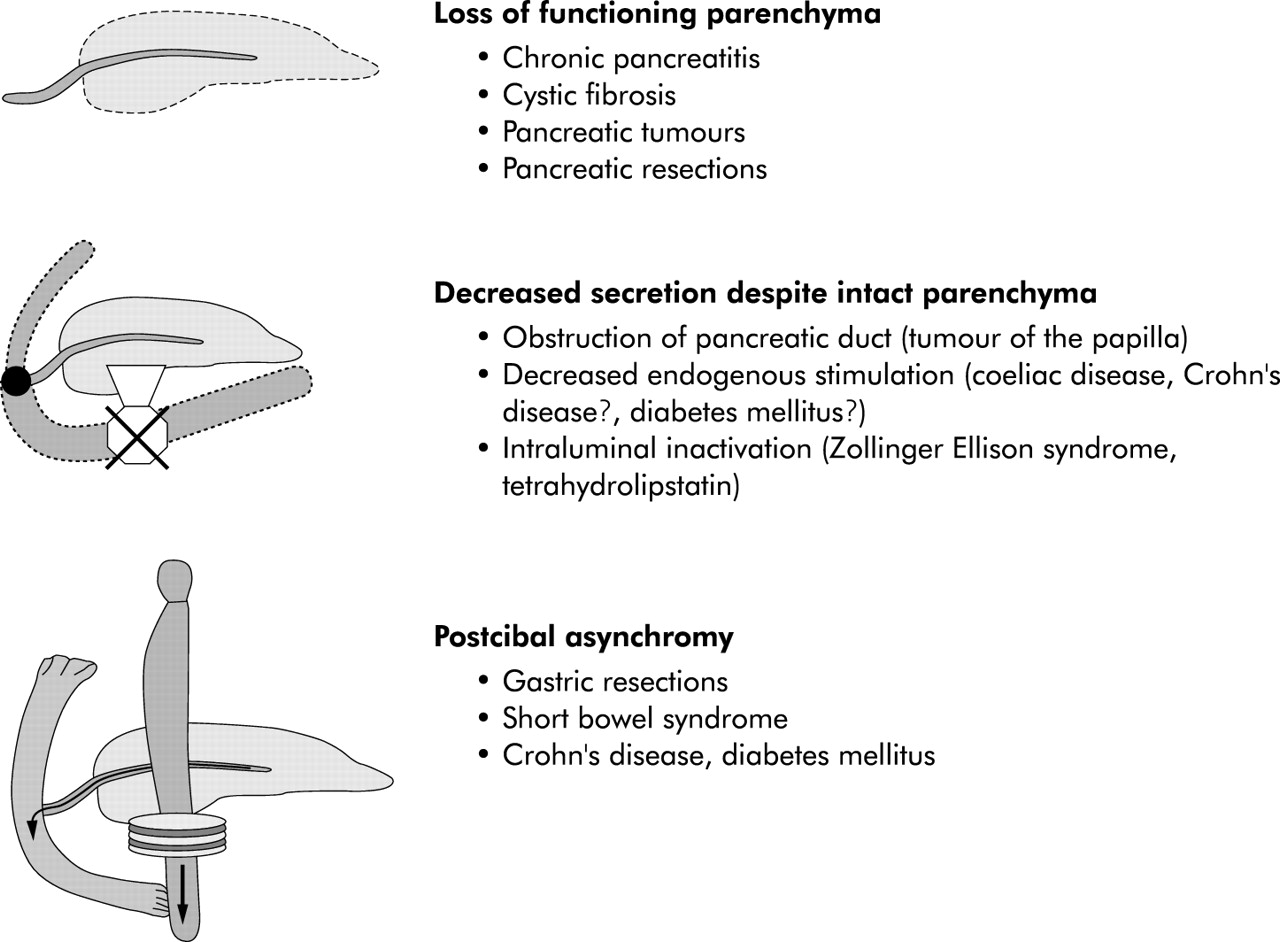



Human Pancreatic Exocrine Response To Nutrients In Health And Disease Gut




Fgf21 Is An Exocrine Pancreas Secretagogue Sciencedirect
Fecha de publicación mar 28, 1990% of the pancreas;Its job is making and releasing enzymes that help your digestive system break down food and absorb nutrients Exocrine pancreatic insufficiency (EPI) develops when your pancreas doesn't make or




Human Pancreatic Exocrine Response To Nutrients In Health And Disease Gut




What Is Exocrine Pancreatic Insufficiency
The exocrine pancreas is a gland that produces digestive enzymes and bicarbonate It is an essential organ for the survival, adaptation, and restoration of the organism The exocrine pancreas' function must be evaluated in relationship to the endocrine pancreas, stomach, intestines, liver, gallbladder, lungs, skin, joints, immunity, central nervous system, autonomicExocrine pancreatic insufficiency (EPI) causes problems in how you digest food Your pancreas doesn't make enough of the enzymes that your body needs to break down and absorb nutrientsExocrine Pancreatic Enzymes Are a Serological Biomarker for Type 1 Diabetes Staging and Pancreas Size Exocrine pancreas abnormalities are increasingly recognized as features of type 1 diabetes We previously reported reduced serum trypsinogen levels and in a separate study, smaller pancreata at and before disease onset




Pancreas Function Pancreatic Cancer Johns Hopkins Pathology




Question Video Describing The Function Of Pancreatic Exocrine Cells Nagwa
Drug treatment Pancreatic enzyme replacement therapy with pancreatin is the mainstay of treatment for exocrine pancreatic insufficiency Pancreatin contains the three main groups of digestive enzymes lipase, amylase and protease These enzymes respectively digest fats, carbohydrates and proteins into their basic components so that they can be absorbed andI read Liz's blog and her journey with exocrine pancreatic insufficiency (EPI) resonated with my own experience The one difference – since the diagnosis, seven years and counting – I continue to calibrate my enzyme dosage Here is my experience with pancreatic enzymes My first (diagnosed) acute pancreatitis attack happened in 1998 and IAlmost all of the pancreas (95%) consists of exocrine tissue that produces pancreatic enzymes for digestion The remaining tissue consists of endocrine cells called islets of Langerhans These clusters of cells look like grapes and produce hormones that regulate blood sugar and regulate pancreatic secretions



What Is The Function Of The Pancreas In Both Endocrine And Exocrine Systems Quora




The Roles Of Calcium And Atp In The Physiology And Pathology Of The Exocrine Pancreas Physiological Reviews
Pancreatic exocrine insufficiency (PEI) means that your pancreas can'tCreated by Raja NarayanWatch the next lesson https//wwwkhanacademyorg/testprep/nclexrn/rngastrointestinalsystem/rnthegastrointestinalsystem/v/endThe pancreas is an organ near the stomach and small intestine that produces enzymes needed for digestion, as well as releasing hormones (including insulin) that regulate body homeostasis including blood sugar levels Dogs with exocrine pancreatic insufficiency are unable to digest nutrients in their diet properly resulting in maldigestion, weight loss, and abnormal feces – usually
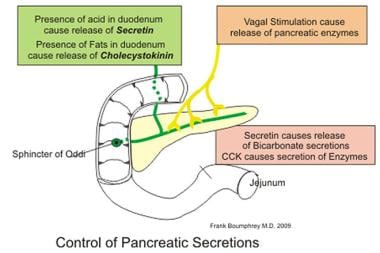



Exocrine Pancreatic Insufficiency Practice Essentials Anatomy Pathophysiology
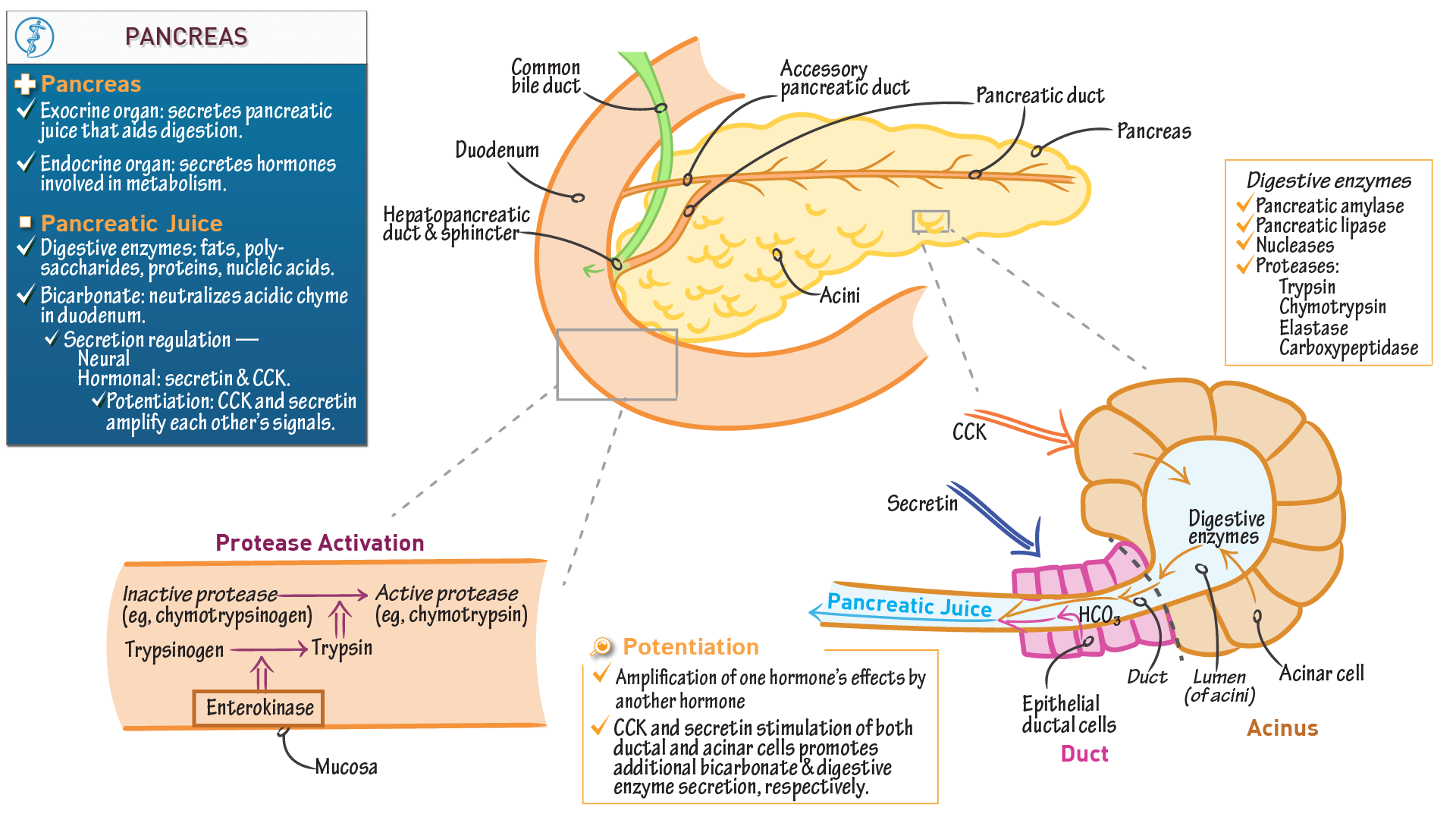



Exocrine Pancreas Draw It To Know It
Exocrine pancreas 1 >The exocrine pancreas is divided into lobules, which are separated by thin fibrovascular septa that coalesce with the pancreatic capsule which surrounds the organ The main purpose of the exocrine pancreas is the production and secretion of diverse digestive enzymes and an alkaline fluid that neutralizes the acidic secretions of the stomachExocrine pancreatic insufficiency (EPI) is defined by a deficiency of exocrine pancreatic enzymes resulting in an inability to maintain normal digestion This inadequate digestion with nutrient and, especially, fat malabsorption occurs when intraduodenal levels of lipase fall below 5–10% of normal enzyme output 1 , leading to pancreatic steatorrhea, weight loss, and a
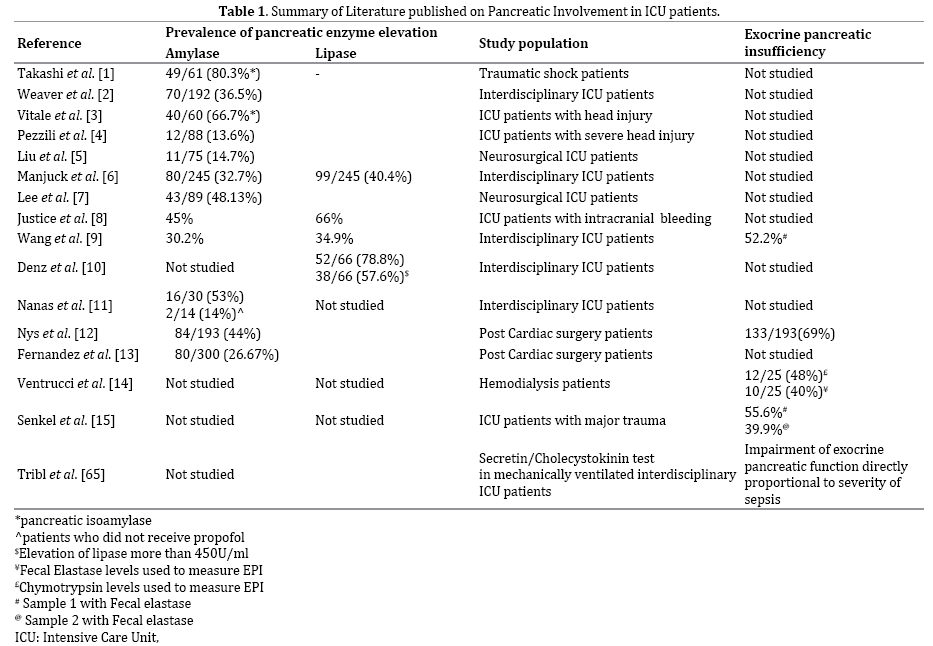



Pancreatic Involvement In Critically Ill Patients Insight Medical Publishing
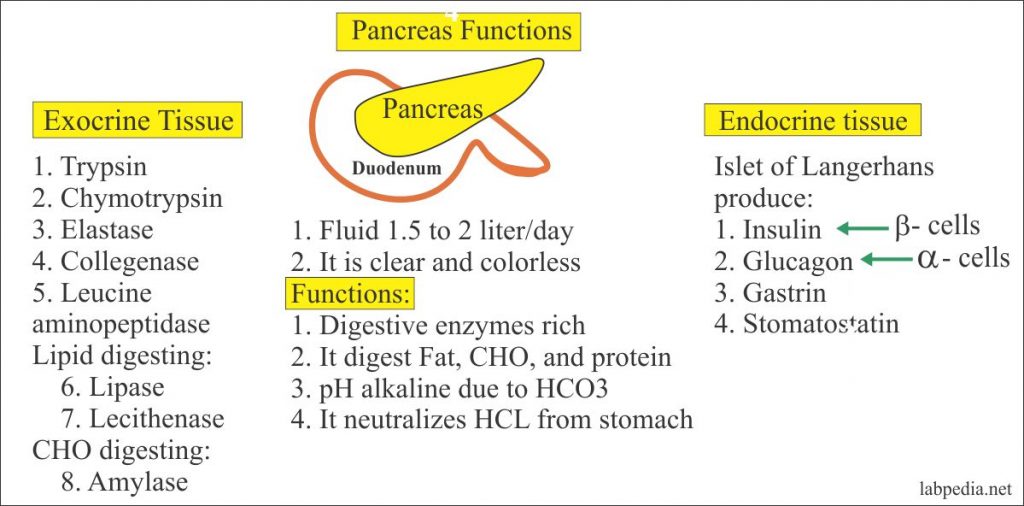



Pancreatic Functions And Acute Pancreatitis Labpedia Net
Produces digestive enzymes that are secreted into the gastrointestinal tract (see " Exocrine pancreas " below) Composed of serous glandular tissue that is separated into lobules by collagenous septae;The secretion of pancreatic enzymes into the small intestine is referred to as its exocrine function and hence the failure to produce enough enzymes is called Pancreatic Exocrine Insufficiency The other role of the pancreas, which affects the use of nutrients once they have been absorbed into the body, is called its endocrine functionFormado por dos componentes secretorios el tejido insular o endocrino (islotes
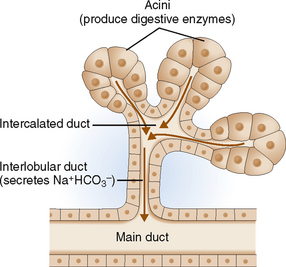



The Exocrine Pancreas Basicmedical Key




Types Pancreatic Enzymes Royalty Free Vector Image
The Exocrine Pancreas in Dogs and Cats The pancreas has both endocrine and exocrine functions The exocrine pancreas is made up of pancreatic acinar cells and a duct system that opens into the proximal duodenum Pancreatic acinar cells synthesize and secrete digestive enzymes (eg, amylase, lipase, and others) and inactive proenzymes ofAcinar cells are cells of the exocrine pancreas that synthesize, store, and secrete digestive enzymes They produce almost all the enzymes required for digestion in the small intestine, including endo and exoproteases, nucleases, lipases, and glycosidasesThe rate of protein synthesis in acinar cells is higher than that of any other cells in the adult body, and theyExocrine pancreatic insufficiency (EPI) is the inability to properly digest food due to a lack of digestive enzymes made by the pancreasEPI is found in humans afflicted with cystic fibrosis and Shwachman–Diamond syndrome, and is common in dogsEPI is caused by a progressive loss of the pancreatic cells that make digestive enzymes;




Exocrine Pancreatic Insufficiency What It Is And Who S At Risk



1
The acinar cells of the exocrine pancreas synthesize digestive enzymes in basallylocated rough endoplasmic reticulum The enzymes, in their inactive form, are packaged into secretory granules and then released into the duct system The enzymes are not activated until they reach the lumen of the duodenumControl of Pancreatic Exocrine Secretion As you might expect, secretion from the exocrine pancreas is regulated by both neural and endocrine controls During interdigestive periods, very little secretion takes place, but as food enters the stomach and, a little later, chyme flows into the small intestine, pancreatic secretion is strongly stimulatedPancreatic Juice Complete digestion of food requires action of both pancreatic and brush border enzymes Most pancreatic enzymes are produced as zymogens Trypsin (when activated by enterokinase) triggers the activation of other pancreatic enzymes Pancreatic trypsin inhibitor attaches to trypsin Inhibits its activity in the pancreas Fig 19




Exocrine Pancreatic Insufficiency Clinical Gastroenterology And Hepatology




Exocrine Pancreas Dysfunction In Type 1 Diabetes Endocrine Practice
Exocrine function and hence the failure to produce enough enzymes is called Pancreatic Exocrine Insufficiency The other role of the pancreas, which affects the use of nutrients once they have been absorbed into the body, is called its endocrine function The pancreas endocrine function also requires the use of specialised molecules, such as theExocrine pancreas insufficiency (EPI) a condition characterized by deficiency of the exocrine pancreatic enzymes, resulting in the inability to digest food properly, or maldigestion may be associated with chronic pancreatitis and cystic fibrosis




Pdf The Exocrine Pancreas Pancreatic Enzymes The Missing Link In Health And Disease Semantic Scholar




Exocrine Pancreatic Insufficiency




What Is Pancreatic Cancer
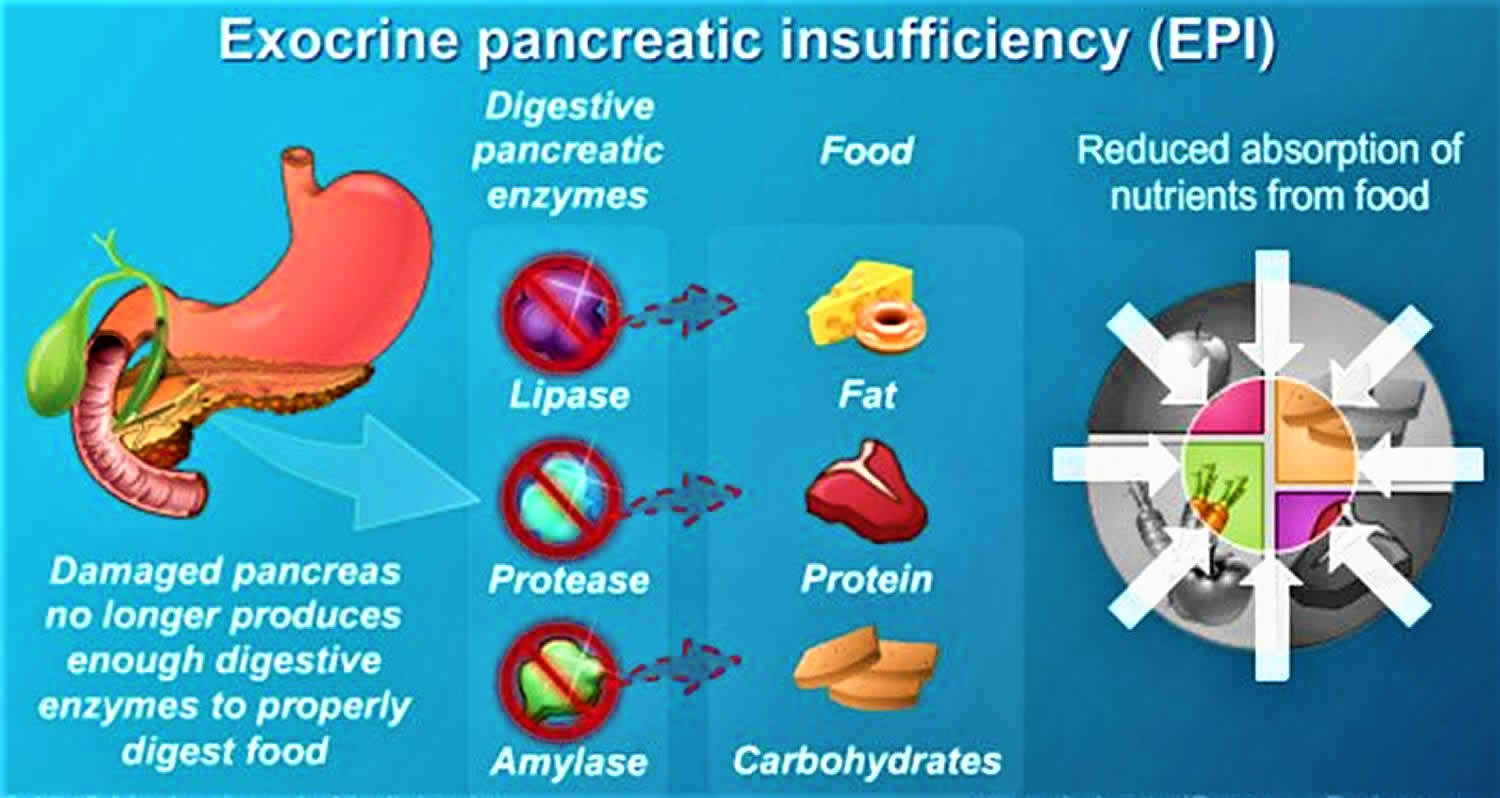



Exocrine Pancreatic Insufficiency Causes Symptoms Diagnosis Treatment
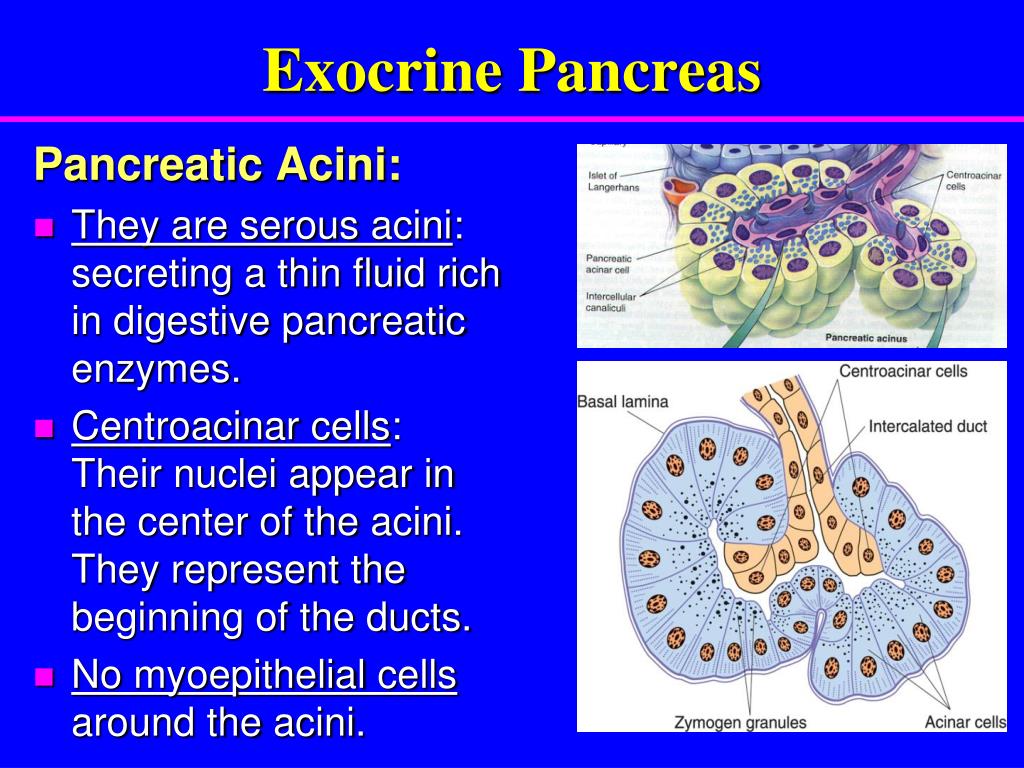



Ppt Pancreas Powerpoint Presentation Free Download Id




Understanding Exocrine Pancreatic Insufficiency Epi Health Beat
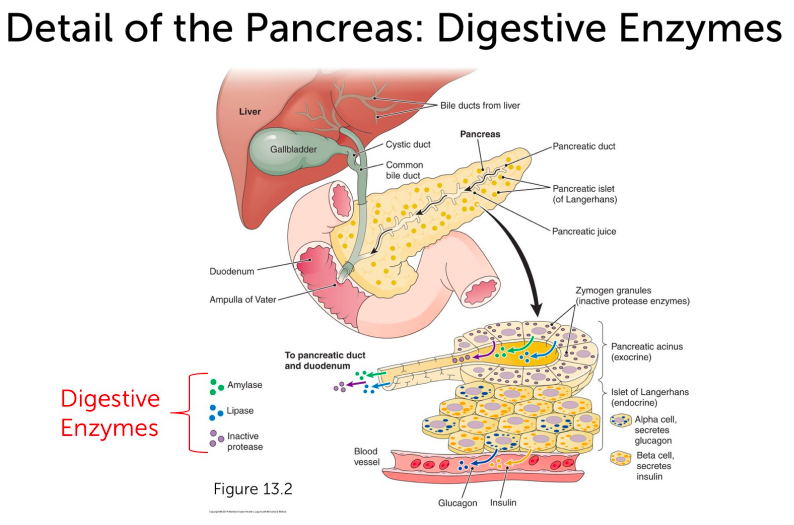



Solved Identify The Digestive Enzymes That Are Produced By Chegg Com




What Is Epi Exocrine Pancreatic Insufficiency
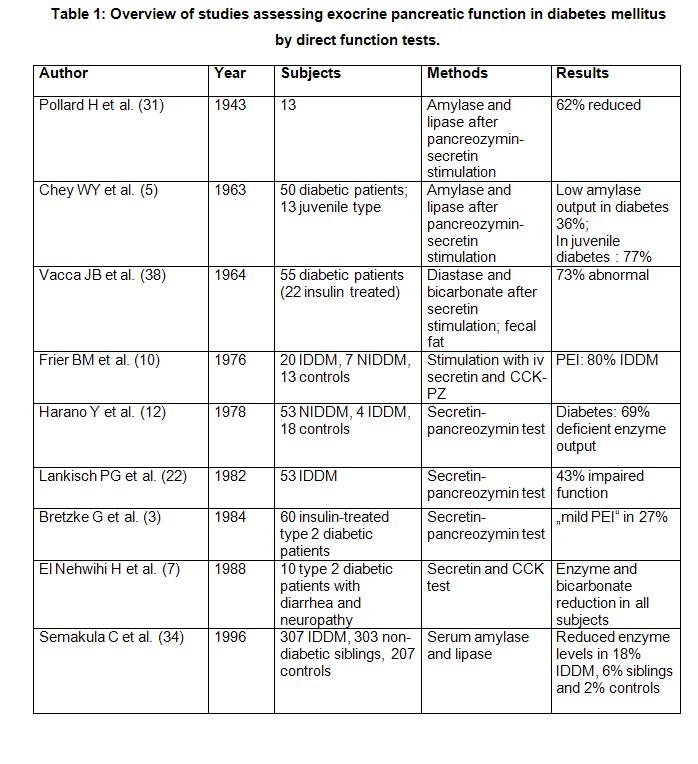



Alterations In Exocrine Pancreatic Function In Diabetes Mellitus Pancreapedia




What Is Exocrine Pancreatic Insufficiency Everyday Health




Exocrine Pancreas And Liver Lippincott Illustrated Reviews Physiology Lippincott Illustrated Reviews Series




Pancreatic Exocrine Insufficiency Guideline Working Party Guideline Algorithm Guidelines




Differentially Expressed Pancreatic Exocrine Enzymes In Islets Cultured Download Table
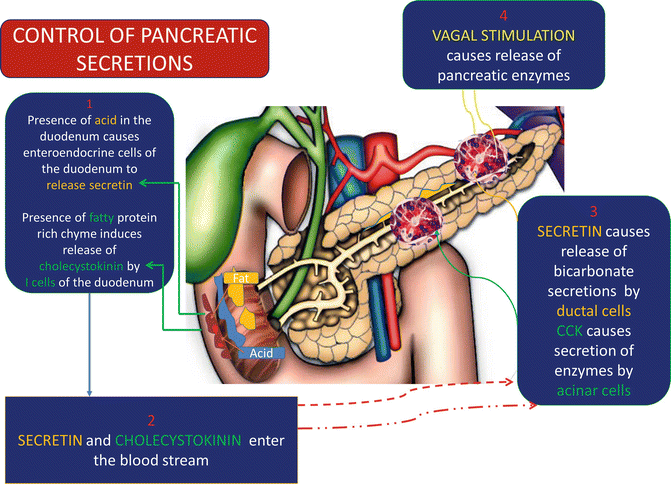



Physiology Of The Pancreas Radiology Key




Topic 14 Nutrition In Pancreatic Diseases Module 14 2 Chronic Pancreatitis Printable Version Johann Ockenga Learning Objectives To Know About The Physiology And Pathophysiology Of Cp Chronic Pancreatitis To Know The Treatment Goals In Cp With




Liver Biliary And Exocrine Pancreas Diseases Online Presentation




Exocrine Pancreatic Insufficiency Youtube
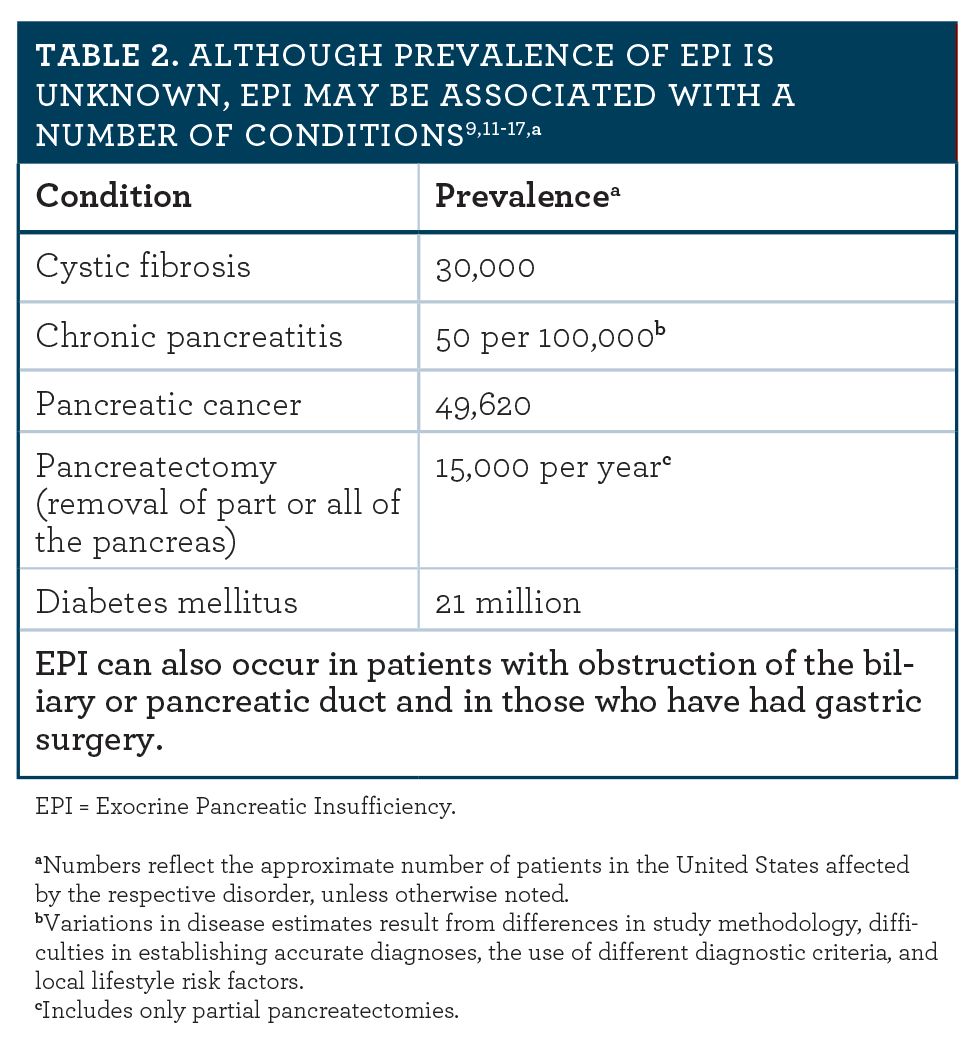



Pancreatic Enzyme Replacement Therapy A View From Behind The Counter




Disorders Of The Exocrine Pancreas Pathophysiology Of Disease An Introduction To Clinical Medicine Lange Medical Books 7th Ed
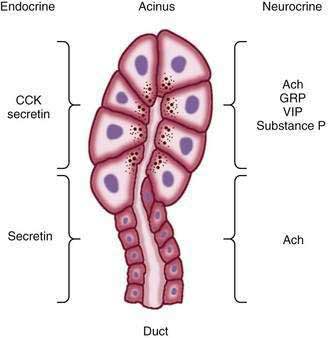



Pancreatic Secretion Clinical Gate




Pancreas Histology Osmosis
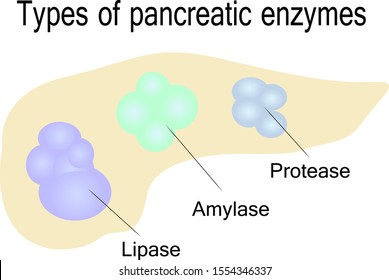



Pancreatic Enzymes Images Stock Photos Vectors Shutterstock




Metabolism Hormones Nutrition Life Style And Disease Prevention The Exocrine Pancreas And Food Digestion Pancreatic Enzymes Are Essential For Breaking Down Starches Fat And Protein The Pancreas Does Not Make Its Enzymes




Disorders Of The Exocrine Pancreas Miniatlas Ec Europe




Topic 14 Nutrition In Pancreatic Diseases Module 14 2 Chronic Pancreatitis Printable Version Johann Ockenga Md Prof Dep Of Gastroenterology Endocrinology Nutrition Klinikum Bremen Mitte St Juergensstrasse 1 Bremen Frg Learning




Pancreatic Secretion Dr Amel Eassawi Dr Shaikh Mujeeb Ahmed Ppt Download




Pdf Pancreatic Exocrine Insufficiency Diagnosis And Treatment In Chronic Pancreatitis And Pancreatic Cancer Semantic Scholar




Exocrine Pancreatic Insufficiency Prevalence Diagnosis And Manageme Ceg




Exocrine Pancreas Flashcards Quizlet




Exocrine Pancreas Video Digestive Glands Khan Academy
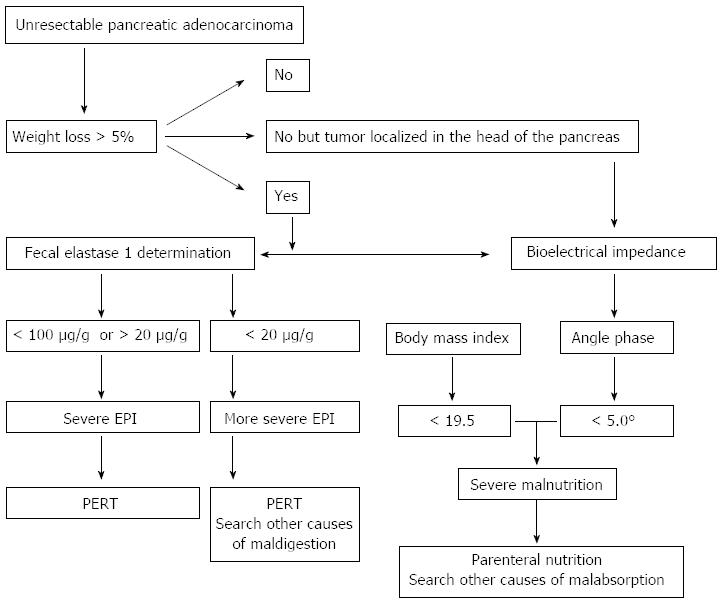



Exocrine Pancreatic Insufficiency In Adults A Shared Position Statement Of The Italian Association For The Study Of The Pancreas




Pancreas Function Pancreatic Cancer Johns Hopkins Pathology




Lesson Exocrine Pancreatic Insufficiency




Ultresa Treatment For Exocrine Pancreatic Insufficiency Epi Clinical Trials Arena




Animal Histology Biol 241 Topic 10 Digestive System




Secretion Of The Human Exocrine Pancreas In Health And Disease Pancreapedia




Diagnose And Treat Pancreatic Exocrine Insufficiency In Diabetes Implementing Guidelines Guidelines In Practice
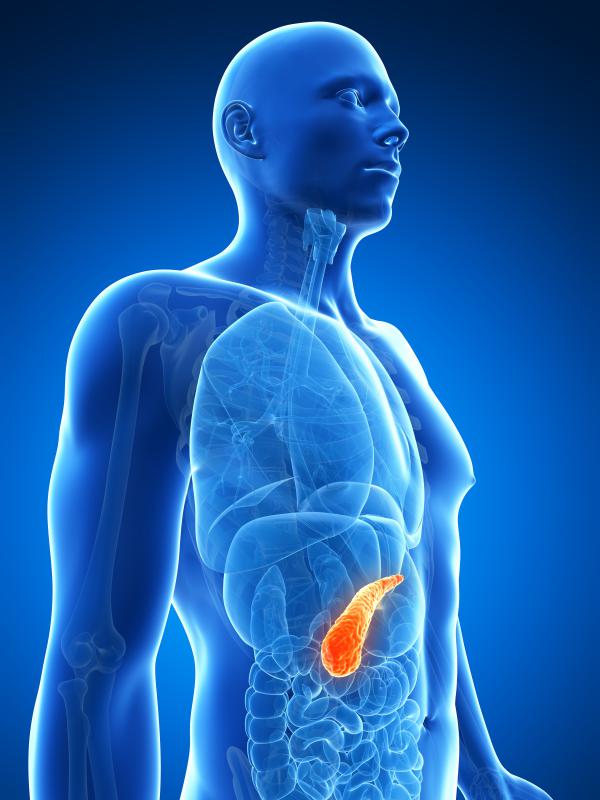



What Is Exocrine Pancreatic Insufficiency With Pictures




Nrsg 407 Pancreas Exocrine Secretes Digestive Enzymes Into The Small Intestines Breakdown Of Cho Protein And Fats Endocrine Produces Hormones Insulin Ppt Download




Disorders Of The Exocrine Pancreas Miniatlas Ec Europe




Know More About Exocrine Pancreatic Insufficiency Epi Therapeutics And Diagnostics Market By Manufacturers Regions Type And Application Forecast To 23 Medgadget



J E S Foundation Pancreatic Cancer



Epi Exocrine Pancreatic Insufficiency A Lack Of Digestive Enzymes Criticalcaredvm




Fgf21 Is An Exocrine Pancreas Secretagogue Abstract Europe Pmc
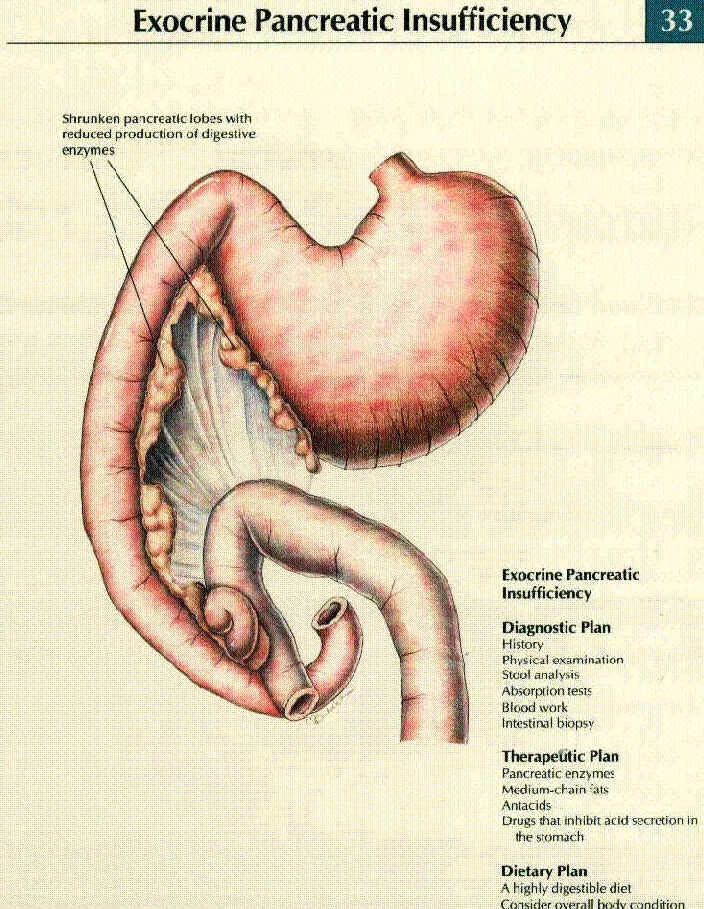



Exocrine Pancreatic Insufficiency Canine Diabetes Wiki Fandom




Towards A New Certified Reference Material For The Biomarker Pancreatic A Amylase Eu Science Hub




Pancreatic Exocrine Insufficiency Pei Canadian Digestive Health Foundation
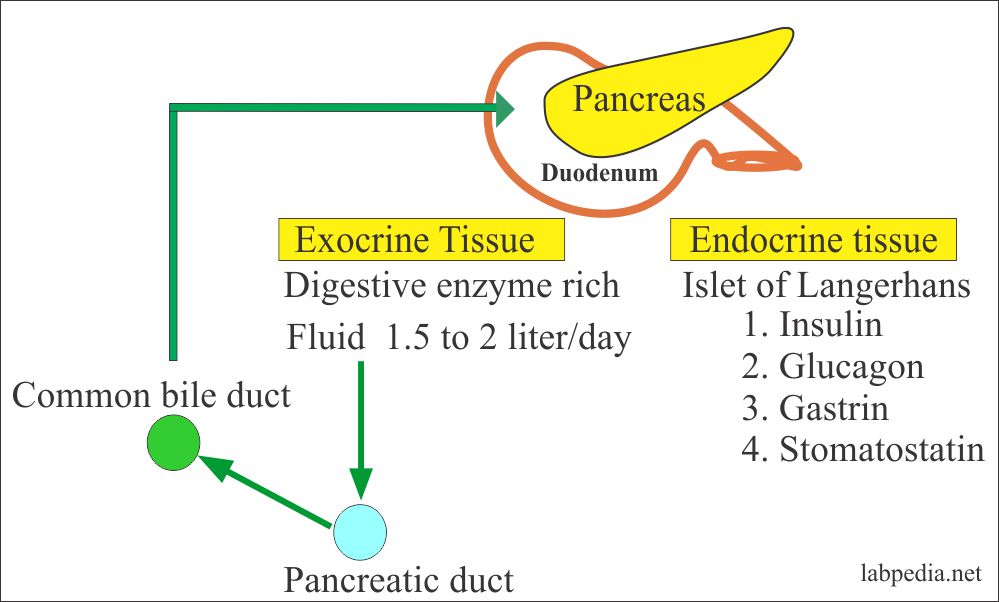



Pancreatic Functions And Acute Pancreatitis Labpedia Net
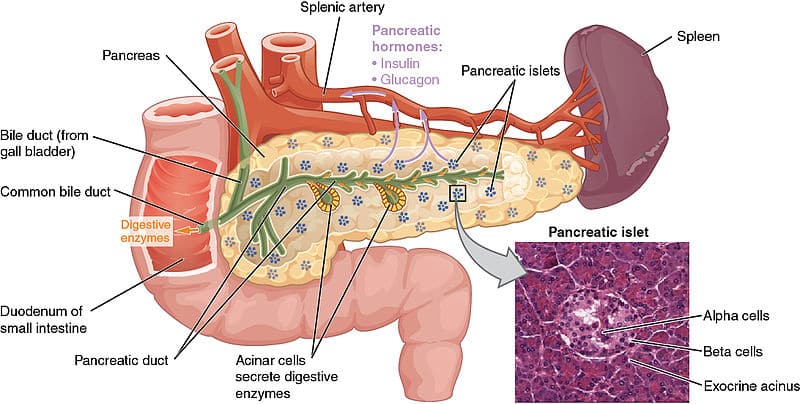



The Exocrine Pancreas Function Secretion Regulation




Solved Incorrect Question 11 012 Pts The Exocrine Pancreas Chegg Com




Regeneration Of The Exocrine Pancreas The Exocrine Pancreas Is Download Scientific Diagram




Pancreas The Pancreas Acts As An Exocrine Gland
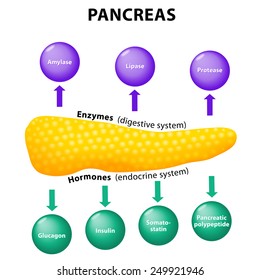



Pancreatic Enzymes Images Stock Photos Vectors Shutterstock




A Primer On Exocrine Pancreatic Insufficiency Fat Malabsorption And Fatty Acid Abnormalities
/exocrine-pancreatic-insufficiency-4177936-821-618578bea845406fa96c78167aff8657.png)



Exocrine Pancreatic Insufficiency Symptoms Causes And Diagnosis
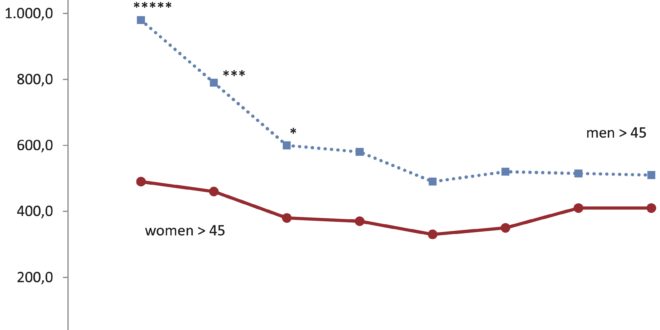



Exocrine Pancreas Function Sex Age Estrogenic And Cholinergic Tone Preliminary Clinical Value Of Citrates Magic Powder



1
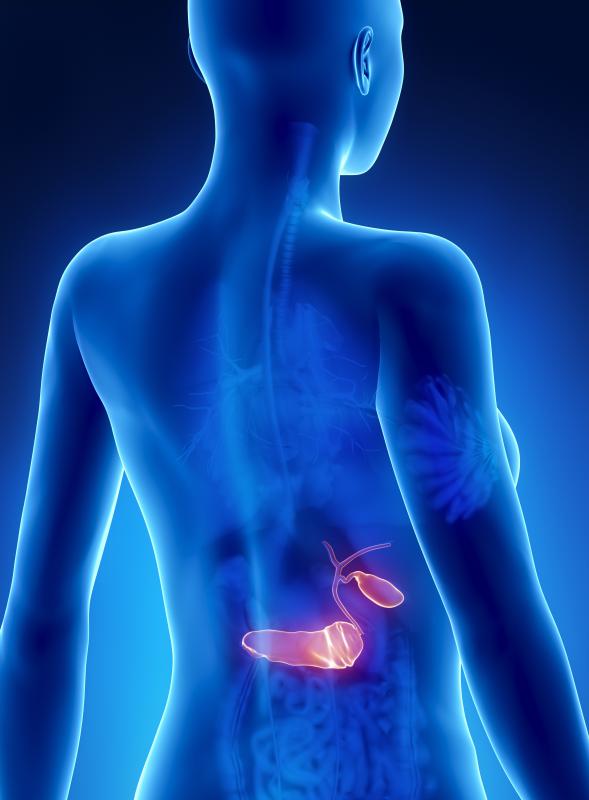



What Is The Exocrine Pancreas With Pictures




P Pancreatic Enzyme Replacement Therapy A Concise Review P Insight Medical Publishing




Endocrine Pancreatic Cell Types And Their Peptide Secretions Exocrine Download Scientific Diagram




Pancreatic Exocrine Insufficiency Diagnosis And Treatment Dominguez Munoz 11 Journal Of Gastroenterology And Hepatology Wiley Online Library




Pancreas Secretion An Overview Sciencedirect Topics



Exocrine Secretions Of The Pancreas



1




Exocrine Pancreatic Insufficiency Mission Cure




Pdf The Exocrine Pancreas Pancreatic Enzymes The Missing Link In Health And Disease Semantic Scholar




Pancreas Wikipedia




File 2424 Exocrine And Endocrine Pancreas Jpg Wikimedia Commons
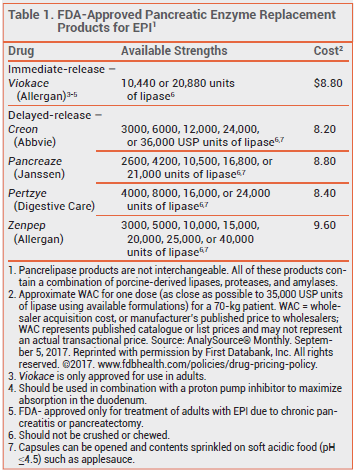



In Brief Pancreatic Enzyme Replacement Products The Medical Letter Inc




Exocrine Pancreatic Insufficiency Diagnosis And Management Youtube




Informacion Adicional Del Pancreas




Who S At Risk Of Exocrine Pancreatic Insufficiency Infographic Everyday Health




14 Rosemary Ideas تصميم دهانات تعليب
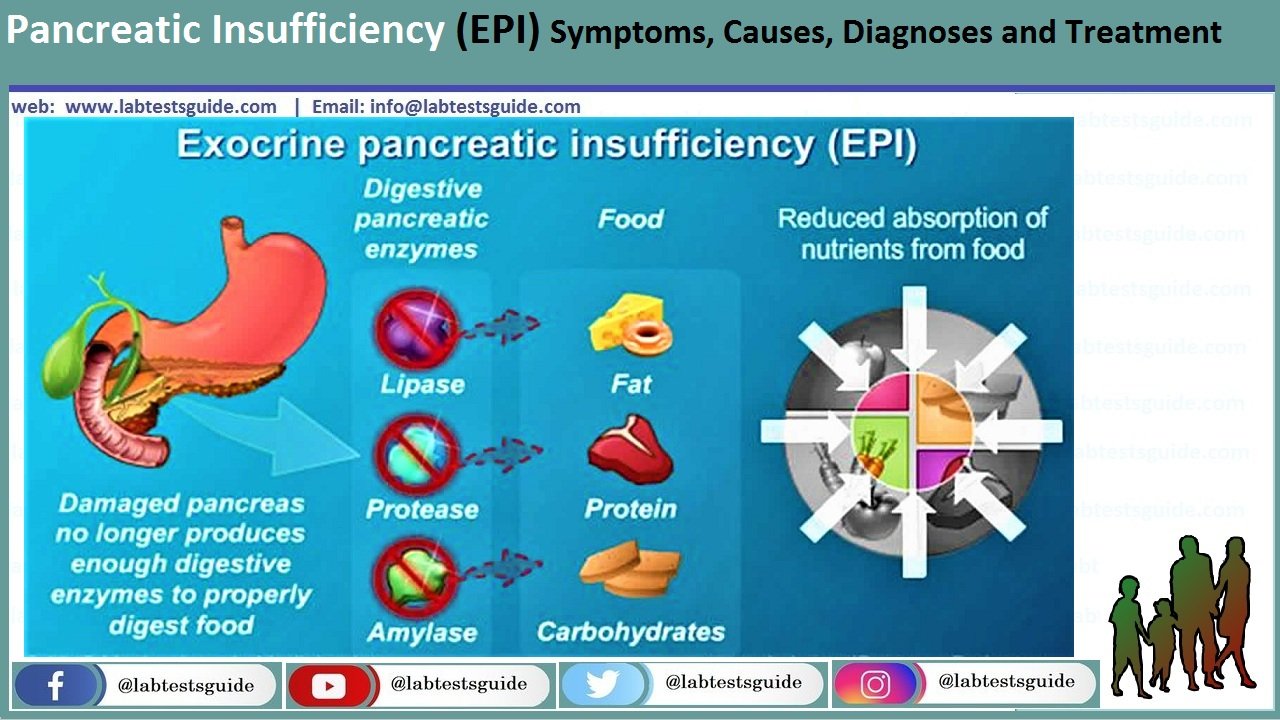



Pancreatic Insufficiency Epi Symptoms Causes Diagnoses And Treatment Lab Tests Guide
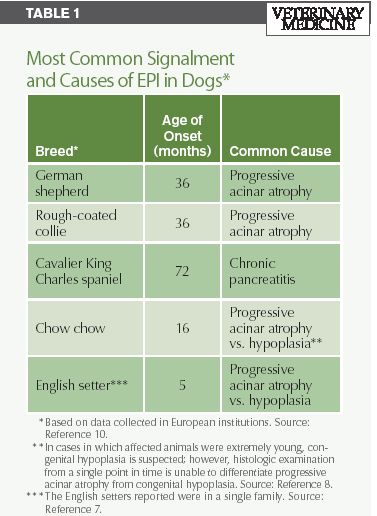



A Quick Review Of Canine Exocrine Pancreatic Insufficiency



1



0 件のコメント:
コメントを投稿